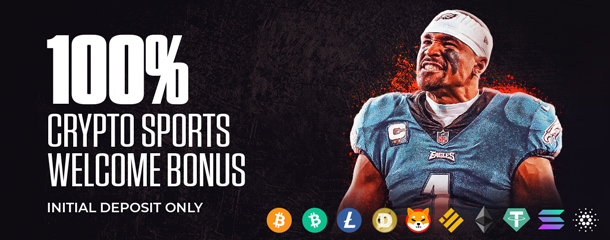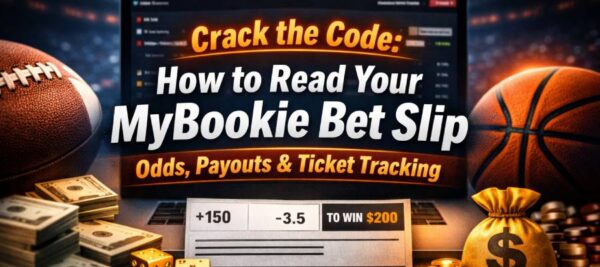When AL teams face NL opponents, these matchups make it the perfect spot to apply a MLB Interleague Betting Strategy.
With unfamiliar teams and inconsistent pricing, interleague games often open the door to overlooked value.
By adopting a contrarian mindset, disciplined bettors can capitalize on mispriced lines the public tends to miss.
This article reveals how to craft a winning baseball betting strategy built specifically for interleague action—where trends, travel, and home-field edges can tilt the odds in your favor.
Analyzing the Contrarian Betting Strategy: What is it and How to Use it for Sports Betting
This ONE Strategy Is a GAME CHANGER for Your Sports Betting Winnings – Seriously!
How to Bet on Sports | MyBookie wants you to be a better gambler with our Sports Betting Guide
Table of Contents: Ready for Interleague Betting
Learn What MLB Interleague Games are About
Understanding MLB Interleague Dynamics
Contrarian Betting In MLB Interleague Games
Contrarian Betting Strategy For Home/Road Dynamics
Betting Pitching Matchups with Contrarian System
Contrarian Betting System For Season Timing
Contrarian Sports Betting Strategies For Different Ballparks
A Closer Look At the MLB Interleague Betting Strategy
Learn What MLB Interleague Games are About
While the introduction of interleague play in baseball wasn’t initially received with a lot of fanfare 20 years ago.
Today, the cross-league matchups often featuring local rivals are widely accepted and even looked forward to by many baseball fans and betting enthusiasts.
However, with these teams meeting rarely and not really knowing one another as well as they do their respective league and division counterparts.
Betting on interleague MLB action can be a tad more difficult than cashing in on ‘regular’ league matchups.
In an effort to help you maximize your chances of cashing in on interleague play this season, here are a handful of expert baseball betting tips to help you out.
^ TopUnderstanding MLB Interleague Dynamics
The foundational differences between AL and NL teams—most notably the designated hitter (DH) rule—play a major role in shaping interleague matchups.
Until recently, the DH was exclusive to the AL, forcing NL pitchers to hit during interleague games at NL parks.
Though MLB adopted a universal DH in 2022, residual impacts from this decades-long disparity still echo in team construction and managerial tendencies.
Another nuance is travel and unfamiliarity.
AL teams visiting NL parks, and vice versa, often encounter ballparks they rarely play in.
This can affect everything from defensive alignments to hitting approaches.
Savvy bettors recognize these small inefficiencies and adjust their baseball sports betting strategy accordingly.
^ TopContrarian Betting In MLB Interleague Games
Contrarian betting involves fading the public and aligning with sharp money, often in less obvious or uncomfortable spots.
Interleague games are ideal for this approach because the public tends to lean heavily on name recognition and recent form—especially when popular AL teams face lesser-known NL clubs or vice versa.
Interleague action can skew perception due to infrequent matchups and lack of recent head-to-head history.
A betting baseball strategy that focuses on contrarian edges—such as undervalued road teams or overlooked underdogs—can often produce positive expected value.
Value In Unpopular Teams
The general public loves to bet on familiar, winning teams—especially Yankees, Dodgers, Red Sox, and Cubs—regardless of matchup context.
When these teams play against mid-market opponents in interleague games, the lines often become artificially inflated.
Smart bettors look beyond the logo.
They assess team form, travel impact, pitcher splits, and lineup adaptability.
When public money floods a side, it inflates the line, creating value on the less popular team.
This makes contrarian plays one of the best betting strategies for baseball, especially during interleague matchups where public bias is amplified.
Fading Public Favorites
How do you know when the public is backing a favorite too heavily?
Indicators include heavy ticket percentages on one team (70%+), minimal line movement in their favor—or even reverse line movement—and heavy juice on the favorite despite even matchup metrics.
Interleague series between a marquee AL team and a struggling NL opponent may create an illusion of an easy win.
But fading public favorites in these spots—particularly when facing a hot pitcher or a team with strong home metrics—can be a profitable angle within your baseball betting strategy.
Line Movement Analysis
Watching line movement is essential in identifying sharp action.
In interleague games, sharp bettors often strike early, especially when they believe the public will drive the line further in the wrong direction.
If the line moves against the betting percentage—known as reverse line movement—it can signal professional bettors are backing the contrarian side.
Integrating this insight into your live betting baseball strategy can also be beneficial, particularly if a starting pitcher falters early and the live odds offer favorable adjustment opportunities.
Here is a great question for you (worth the read, you will learn from it): Early vs Late: What’s The Best Betting Strategy?
^ TopContrarian Betting Strategy For Home/Road Dynamics
Home-field advantage in baseball is subtle but important—and even more so in interleague play.
AL teams used to DH lineups may lose offensive firepower on the road, while NL teams benefit from the added DH at AL parks.
Some teams are notably stronger or weaker on the road, and interleague travel introduces unfamiliar elements like odd start times, new locker rooms, and different hitting backdrops.
Evaluating these home/road performance disparities can give you a crucial edge in developing the best baseball betting strategy for interleague contests.
^ TopBetting Pitching Matchups with Contrarian System
Pitchers often thrive—or struggle—when facing unfamiliar lineups.
A dominant AL ace might suddenly falter against an NL team that attacks differently or exploits his weaknesses.
Conversely, an average pitcher might excel simply because the opposing hitters have no data or rhythm against his delivery.
Looking deeper into splits, historical performance against the other league, and how pitchers fare in different ballparks can turn this into a sharp baseball sports betting strategy.
Oddsmakers often price these matchups generically, creating exploitable spots.
Here’s the bar chart comparing K/9 (strikeouts per 9 innings) for pitchers in interleague vs. intra-league matchups.
 ^ Top
^ Top
Contrarian Betting System For Season Timing
Interleague betting strategies should adapt to the MLB calendar.
Early in the MLB season, unfamiliarity is at its peak, offering chaos—and opportunity.
In midseason, injury fatigue and trade rumors begin influencing motivation.
Late-season interleague games, especially involving playoff contenders and spoilers, bring asymmetric incentives.
Understanding team context—are they in a pennant race, resting starters, or fielding rookies?—helps tailor your betting baseball strategy.
Contrarian bettors find value in teams with something to prove—or nothing to lose.
If you have any doubts and even doesn’t know what the Contrarian Strategy is, read this article, worth it: Analyzing the Contrarian Betting Strategy: What is it and How to Use it for Sports Betting.
^ TopContrarian Sports Betting Strategies For Different Ballparks
Every MLB park has its quirks.
Fenway’s Green Monster, Coors Field’s altitude, and Tropicana’s turf all create unique playing conditions.
When a team from the opposite league visits a park they’ve rarely played in, there’s often a learning curve.
Assess how pitchers and hitters adapt to these conditions and consider historical interleague performance in each park.
Understanding these factors sharpens your baseball betting strategy and helps spot inefficiencies before the market catches on.
Let’s get some data on ballpark factors for Interleague Play.
Here’s a table of MLB ballparks over (approximately) the last 10 years, showing overall run factor and, where available, interleague-specific run factor differential or context.
Higher values (>1.000 or >100 depending on format) indicate more run-scoring:
MLB ballparks over (approximately) the Last 10 Years
| Ballpark Name | League | Overall Run Factor | Interleague Run Factor Differential (if available) |
|---|---|---|---|
| Coors Field | NL | ~1.412 (2015–19) | Highest run environment; consistent +15% boost |
| Fenway Park | AL | ~1.097 | Strong overall run factor despite mixed HR metrics |
| Great American Ball Park (CIN) | NL | ~1.030 | 3% above avg in runs; heavy HR influence |
| Camden Yards (BAL) | AL | ~1.051 | Run-friendly park, variable layout affects totals |
| Chase Field (ARI) | NL | ~1.096 | Historically favors hitters, especially in summer |
| Citi Field (NYM) | NL | ~0.891 (2019) | Run suppression consistent, especially for HRs |
| Angel Stadium (LAA) | AL | ~0.879 | Pitcher-friendly, often underperforms totals |
| Petco Park (SD) | NL | ~0.828 (2013–14) | One of the most pitcher-friendly parks |
Data spans roughly 2012–2022; park factors fluctuate annually.
Keep in mind that Interleague-specific differentials aren’t widely published except hints via park factor logic, that’s DH impacts since 2020.
Coors Field remains by far the most extreme run-scoring park up to the moment.
^ TopA Closer Look At the MLB Interleague Betting Strategy
AL Rules!
If you didn’t know, teams from the American League have pretty much owned their National league counterparts over the past 14 years—from 2004 through 2017.
AL teams won every interleague season with an overall record of 1,897–1,571.
Had you bet $100 on AL teams during that span, you’d have banked $16,935.
Better yet, if you’re thinking about employing the “bet on AL teams” angle during interleague play this season, things are a bit different.
As of June 16, 2025, both leagues are nearly deadlocked, with each league owning 535 wins—the AL is 535–534 (0.501) and the NL is 535–536 (0.500).
So the AL edge is gone, and the season is essentially a push.
Let’s give you an idea on how far this AL Rules really goes, dug up so stats fro 2005-2017, check the Overall, interesting figure.
The table below shows how often the majority of moneyline bets supported the American League during Interleague Play.
| Year | Percentage | Public on AL | Games |
|---|---|---|---|
| 2005 | 56.75% | 143 | 252 |
| 2006 | 66.67% | 168 | 252 |
| 2007 | 57.54% | 145 | 252 |
| 2008 | 66.27% | 167 | 252 |
| 2009 | 58.73% | 148 | 252 |
| 2010 | 50.79% | 128 | 252 |
| 2011 | 58.33% | 147 | 252 |
| 2012 | 58.73% | 148 | 252 |
| 2013 | 55.33% | 166 | 300 |
| 2014 | 59.33% | 178 | 300 |
| 2015 | 54.33% | 163 | 300 |
| 2016 | 58.00% | 174 | 300 |
| 2017 | 73.91% | 17 | 23 |
| Overall | 58.43% | 1892 | 3238 |
Nothing Like Some Home Cooking
Now, you do need to know that the majority of the AL teams’ wins during this time frame have come at home.
From 2004–2025, AL teams still hold the all-time edge, with a cumulative interleague record of 3,962–3,690, a winning percentage of .518 and a +1,714 run differential.
Hopefully you’re sitting down, because AL teams have won an insane $12,283 in those contests since 2004.
Hey… Watch the Road!
You may want to take it a bit easy when betting on AL teams in interleague play when they’re on the road.
Road performance remains weak: between 2004–2017, AL teams were 877–886 (~.497) away from home.
While current road stats aren’t fully tallied yet, historical trends suggest caution when the AL is on the road.
For the Love of Money!
The O’Jays aren’t the only ones with a ‘love for money.’
The American League has produced a winning moneyline record against the National League in 13 of 16 seasons, including 2008 when the AL pounded the NL 149-103 against the moneyline.
Last year, American League ballclubs went 165-135 against their NL counterparts and so far, that trend has continued.
Now, that you know, go find yourself some interleague matchups where the AL team is at home, and you’ll likely end up one happy camper!.
We have talked of which side has more vitories, so it’s time to go over MyBookie American League Winner betting lines.
Let’s not forget the MyBookie National League Winner betting odds, we have talked about finding hidden value in these lines, so check out today.
^ TopConclusion
Interleague play in MLB creates fertile ground for a disciplined, contrarian baseball betting approach.
From exploiting public bias to capitalizing on unfamiliar pitching matchups, sharp bettors who study matchups, interpret line movement, and embrace discomfort can gain a profitable edge.
The best betting strategy for baseball isn’t about always picking winners—it’s about finding mispriced lines and betting with long-term discipline.
As always, bet responsibly and treat every wager as part of a long-term process.
In the unpredictable world of interleague MLB betting, your greatest edge may be the discipline to think differently.

MyBookie’s Sportsbook Betting Guide | Learn MLB Betting Strategy
You’ve got the basics, now it’s time to dive deeper into MLB strategy with our baseball betting guide.
Make smarter and value-driven bets this Season!
- Play-In Game Strategy Skip The Starter
- Optimal Strategies To Bet On The MLB Postseason
- Handicapping Starting Pitchers for MLB Bets
- Profitable Underdog Betting Systems for Baseball
- Getting To Know The MLB Betting Totals System
- Understanding The MLB Betting Underdog System
- Understanding the Pro Baseball Favorites Betting System
- How to Bet the MLB Grand Salami
- Sportsbook Guide to Baseball Run Line Betting
- Sports Guide: How To Handicap Day and Night Baseball Games
- Umpires And Their Effect On MLB Betting Totals
- Pitcher vs. Team Records: Crucial Tips to Note in MLB Betting
- Worst Pitchers Betting System
Sports Betting Odds
Betting Online Casino
| Playing Blackjack or Poker |
| Understanding Live Casino |
| Best Casino Online Games |
Sportsbook Odds | MyBookie Online
^ Top






